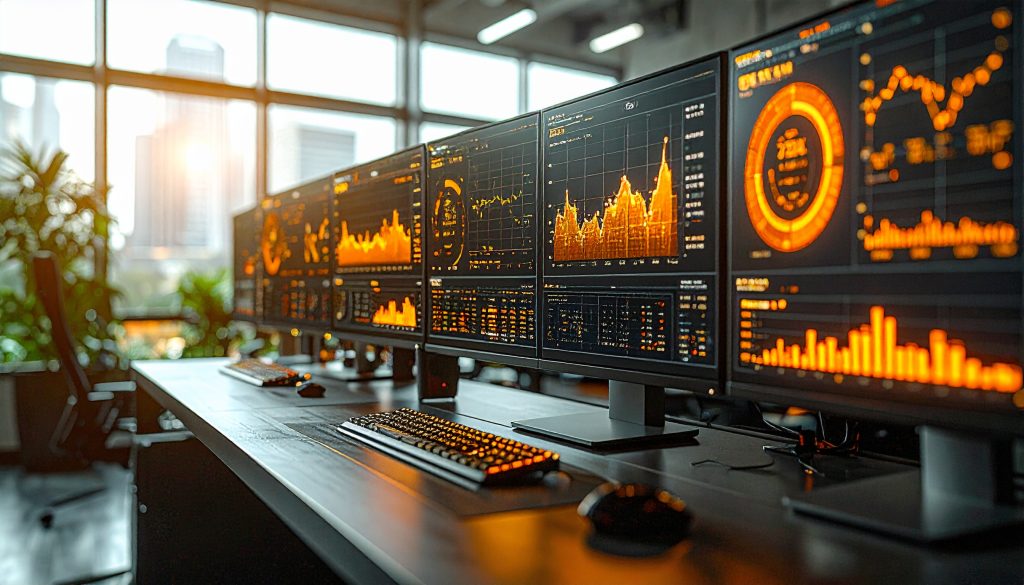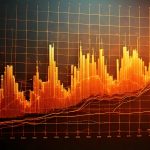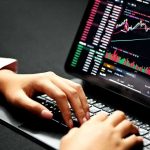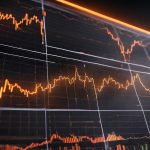Introduction
While the Forex market offers significant opportunities, success starts with understanding how the system works behind the scenes. Unlike stock markets that rely on centralized exchanges, Forex operates on a decentralized and global scale. This article explores:
- How Forex is structured
- Who the major players are
- How currency prices are determined
- Why market sessions matter
- What beginners need to know to navigate this landscape
Let’s break it all down.
- The Decentralized Nature of Forex
OTC Market Explained
Forex is an over-the-counter (OTC) market. There’s no single physical location where currencies are exchanged. Instead, trades occur electronically through a global network of banks, brokers, and institutions. This decentralized setup means:
- Trading occurs 24 hours a day, 5 days a week
- Prices are driven by market supply and demand, not a central order book
- Liquidity and volatility vary based on global trading sessions
No Single Exchange
Unlike the NYSE or NASDAQ, Forex doesn’t operate under a centralized governing body. Instead, different market participants quote and trade based on mutual agreements and credit relationships.
2. The Interbank Market: The Forex Backbone
Who Trades in the Interbank Market?
At the top level of the Forex market sits the interbank system, where the world’s largest financial institutions trade currencies in massive volumes, often millions of dollars per transaction.
Major players include:
- JPMorgan Chase
- Deutsche Bank
- Citigroup
- UBS
- HSBC
These banks provide liquidity and act as market makers, quoting both buy (bid) and sell (ask) prices.
How Interbank Trading Works
Transactions occur over proprietary networks or communication systems like Reuters Dealing or EBS (Electronic Broking Services). Credit agreements are key—banks only trade directly with institutions they have trust and credit relationships with.
3. Who Are the Other Participants?
The Forex market is an ecosystem with multiple layers of participants, each playing a distinct role.
A. Central Banks
They manage national currencies and can intervene in Forex markets to:
- Stabilize their currency
- Manage inflation
- Support monetary policy goals
Example: The Bank of Japan often intervenes when the yen strengthens too much, harming Japanese exports.
B. Multinational Corporations
Businesses use Forex to:
- Convert foreign revenues to home currency
- Hedge against currency risk for overseas payments
- Budget and plan operations more accurately
These transactions may not be speculative but are still significant drivers of market activity.
C. Hedge Funds and Investment Managers
These entities may speculate on exchange rate fluctuations as part of their investment strategy. With millions or billions in capital, their positions can move markets—especially in low-volume currencies.
D. Retail Forex Brokers
They bridge the gap between retail traders and the interbank market. They offer platforms like MetaTrader 4/5, provide leverage, and aggregate liquidity from multiple sources. Retail clients access the market through these intermediaries.
E. Retail Traders
These are individuals trading with their own money. While they represent a small portion of total volume, technological advances have democratized access to the market.
4. How Currency Prices Are Determined
Forex operates on a floating exchange rate system. Prices are not fixed but fluctuate constantly due to:
Supply and Demand
The more demand for a currency, the more its price rises relative to others.
Example: If U.S. interest rates rise, foreign investors may want more USD to buy U.S. assets, pushing the value of the USD higher.
Economic Data
News releases like GDP, unemployment, CPI (inflation), and central bank statements can drive strong short-term moves.
Political Stability
Countries with stable governments and strong institutions generally have more attractive currencies.
5. Forex Market Sessions: Global Clock Rotation
The Forex market runs 24/5, but that doesn’t mean it’s equally active all the time. Trading volume and volatility fluctuate depending on the time of day and which financial centers are open.
Major Trading Sessions (GMT)
| Session | Hours (GMT) | Characteristics |
| Sydney | 22:00–07:00 | Lower volume, early moves in AUD/NZD |
| Tokyo | 00:00–09:00 | JPY pairs active, moderate liquidity |
| London | 08:00–17:00 | Highest volume, strong moves in EUR/GBP |
| New York | 13:00–22:00 | Major news events, strong USD activity |
Why Session Overlaps Matter
When two sessions overlap (e.g., London & New York), volume and volatility spike, creating more trading opportunities.
Best Time to Trade (for most):
- 13:00–17:00 GMT → London-New York overlap
- High liquidity, tighter spreads, and stronger trends
6. Understanding Price Quotes
A typical Forex quote looks like this:
EUR/USD: 1.1040 / 1.1042
- Bid price: 1.1040 (what you get if you sell EUR)
- Ask price: 1.1042 (what you pay to buy EUR)
- Spread: 2 pips (difference between ask and bid)
Prices are influenced in real-time by orders placed through banks, institutions, and brokers—making Forex a dynamic auction environment.
7. Regulation and Broker Trustworthiness
Because Forex is decentralized, regulation varies by country. Traders must choose brokers carefully.
What to Look for in a Broker:
- Regulated by a major authority (FCA, ASIC, CFTC, CySEC)
- Transparent pricing and fees
- Segregated client funds
- Good reputation and reviews
- Efficient trade execution
8. Risks of the Decentralized Model
While the decentralized model allows 24-hour trading and global access, it also has downsides:
- No central price transparency
- Varying spreads during low-liquidity times
- Greater risk of dealing with unregulated brokers
That’s why due diligence is critical when choosing where to trade.
9. Key Takeaways for Beginners
- The Forex market is a global, decentralized system that functions without a central exchange.
- It operates through a network of participants ranging from central banks to individual retail traders.
- Understanding who participates and how prices are formed helps new traders make informed decisions.
- Forex trading sessions affect liquidity, spreads, and volatility—knowing when to trade is just as important as knowing what to trade.
- Choosing a trusted, regulated broker is essential to long-term success.
FAQs – How the Forex Market Works
Q1: What does it mean that the Forex market is decentralized?
The Forex market is decentralized because it doesn’t operate through a single physical exchange. Instead, currencies are traded over-the-counter (OTC) via a global network of banks, brokers, and financial institutions. This allows Forex trading to occur 24 hours a day across different time zones, without a centralized marketplace like the NYSE or NASDAQ.
Q2: Who are the main participants in the Forex market?
The Forex market is made up of several types of participants, each with unique roles:
- Interbank institutions (e.g., JPMorgan, UBS) provide large-scale liquidity
- Central banks manage national currency policies
- Corporations hedge international payments and income
- Hedge funds and investment firms engage in large-volume speculative trades
- Retail brokers give individual traders access to the market
- Retail traders trade for personal profit using broker platforms
Q3: What is the interbank market in Forex trading?
The interbank market is the core layer of the Forex ecosystem where major global banks trade currencies with one another. These trades are typically large in volume and executed through proprietary networks such as EBS or Reuters Dealing. Prices generated here are used to quote currency pairs to retail and institutional clients.
Q4: How are Forex currency prices determined?
Currency exchange rates in the Forex market are determined by real-time supply and demand. Key influences include:
- Interest rate differentials
- Economic indicators (e.g., GDP, inflation)
- Central bank decisions
- Political and financial stability
- Market sentiment
This system is called a floating exchange rate regime, where prices fluctuate constantly based on market dynamics.
Q5: Why is the Forex market open 24 hours a day?
Forex is open 24/5 because it follows the global flow of financial centers. As trading ends in one region, it starts in another—moving from Sydney → Tokyo → London → New York. This continuous rotation allows traders to operate nearly anytime, regardless of location.
Q6: What are the major Forex trading sessions and their characteristics?
The four main Forex trading sessions (GMT-based) are:
| Session | Time (GMT) | Highlights |
| Sydney | 22:00–07:00 | AUD/NZD pairs, lower volume |
| Tokyo | 00:00–09:00 | Active JPY trading, stable liquidity |
| London | 08:00–17:00 | Highest volume, tight spreads |
| New York | 13:00–22:00 | Key USD news events, volatile moves |
Best trading time: 13:00–17:00 GMT (London–New York overlap) for maximum liquidity and price movement.
Q7: What is the Forex bid/ask spread and how does it affect traders?
The bid is the price a broker will pay for a currency, and the ask is the price they will sell it for. The spread is the difference between the two. For example:
- EUR/USD: 1.1040 / 1.1042 → Spread = 2 pips
The spread represents a cost to the trader, especially for short-term strategies like scalping.
Q8: Are all Forex brokers regulated the same way?
No. Forex regulation varies by country, and not all brokers are properly regulated. Look for brokers licensed by trusted regulators:
- FCA (UK)
- ASIC (Australia)
- CFTC/NFA (USA)
- CySEC (EU)
A regulated broker ensures fund safety, transparent pricing, and fair trading conditions.
Q9: What are the risks of trading in a decentralized Forex market?
While decentralization allows for global access and 24-hour trading, it also introduces:
- Lack of central price transparency
- Wider spreads during low-volume times
- Higher risk of fraud from unregulated brokers
- Execution issues with less reliable platforms
Due diligence and choosing a reputable broker are essential to minimize these risks.
Q10: How can a beginner navigate Forex market structure effectively?
To trade Forex confidently as a beginner:
- Learn how the market structure works
- Know the key participants and their roles
- Understand price formation mechanisms
- Be aware of global trading sessions and their impact on volatility
- Use a regulated broker with a demo account for practice
Start with educational content like this and build up gradually.





The use of offensive and immoral words and content in any form and by any person is prohibited.
Publishing any non-economic views, promoting the site, promoting social network pages, including contact information and unrelated links is not allowed.
Comments that violate the above rules will not be approved.